This Post May Contain Affiliate Links. Please Read Our Disclosure Policy.
When it comes to baking perfect chocolate chip cookies, it sounds so simple. Something we grew up with. But then for some reason your cookies come out flat, too cakey, and sometimes just seem to have a mind of their own! What gives? It comes down to knowing some cookie science. In this post, you will learn which flour is best for cookies. And what happens when you swap one flour for another. Keep reading to check out all the awesome cookie science results.
Chocolate chip cookies were one of the first things I remember attempting on my own in the kitchen. I “followed the recipe” or so I thought.
And what I remember most is that every time I attempted chocolate chip cookies the results always differed. How on earth is that possible? I mean I used the same ingredients. I creamed my butter. Some were flat cookies, some were chewy and crispy. Some cakey. What gives?
Well when it comes to the perfect cookie, a lot has to do with the science of the ingredients. Understanding how the ingredients function will help you achieve the perfect cookie in the end.
Today it’s all about what flour does in our cookies and which flour is best. Let’s dive in shall we?
What Does Flour Do In Cookies?
Before we dive into the cookie science results let’s discuss what flour actually does for our cookies. I like to think of flour as the bricks of the cookie building.
Flour helps to provide structure to our cookies due to the protein, gluten, that is formed when the flour becomes hydrated.
This means that the flour can be responsible for making our cookies: chewy, cakey, even dry and crumbly.
The difference in our cookie texture then can come down to 2 factors:
- Type Of Flour Used (different flours have different protein contains which means different amounts of gluten will be formed)
- Amount Of Flour Used – incorrect measuring can result in a cookie that is dry and crumbly vs. chewy and delicous.
For example, a cookie where you want it to hold their shape – like shortbread or biscotti – more flour will be used in proportion to the liquid. (source: Fine Cooking)
What Is Gluten?
When it comes to perfect cookie baking, understanding gluten and how it’s formed is one step in the right direction of having cookie success in the kitchen.
Gluten is actually formed between two proteins, gliadin and glutenin and when liquid is added combine to form gluten.
And the more gluten that is formed, the more structure your baked good will have. Great for bread. Bad for cakes.
Think of gluten as a slinky. This protein, like a slinky can stretch and expand which means it can provide lots of structure and shape (aka rolling it into thin sheets of puffy pastry), can trap gasses (aka carbon dioxide when baking bread), and provide that chewiness we love (think breads, and al dente pastas).
And different types of flour will have different protein contents. Which means the amount of gluten that forms will vary based on the type of flour that you choose to use. And how much mixing you do.
Just remember:
More protein = more gluten. More gluten = more chew.
What Are The Different Types Of Flour And Their Uses?
Of course to fully understand what happened with each cookie batch made with the different flours. I think it’s important that you understand the different types of flour and their uses.
Different flours have different protein contents. The higher the protein content, the more structure it will provide for your cookies.
- More structure = more chew.
Listed below are protein contents of the most common flours you might use:
All Purpose Flour
The “workhorse” of flours. If a recipe calls for “flour” it is to be assumed that you use all purpose. If you are going to stock one flour in your pantry make it this one. It can be found as bleached or unbleached.
Protein Content: Usually around 10-12%.
Best Used For: This is the staple flour you should have on hand. It can be used for pretty much any baking recipe- of course cookies.
Bread Flour
Bread flour is my go to flour if I want a chewy texture.. The higher protein content creates more gluten. More gluten formation means more carbon dioxide will be trapped between the strands of gluten which will help to make that bread or pizza dough rise.
Protein Content: 12-14%.
Best Used For: Yeasted breads, pizza dough, and pastry doughs like puff pastry. But this flour can also be used to give more structure to your chocolate chip cookies.
Cake Flour
This is your go to flour for cakes and other baked goods where tenderness is favorable. You can try making your cake flour.
Protein Content: 5-8%.
Best Used For: Cakes of course. Duh, right? Especially for certain types of cakes like angel food, genoise or sponge cakes. And with that being said, I like using cake flour in my cupcakes too. But you can also try using cake flour in your muffins, scones, even your cookies for a tender baked good in the end.
Whole Wheat Flour
This flour uses 100% of the wheat kernel, which means when you use this flour your baked goods will come out heavier and denser than if you were to use a white flour. You will also notice a difference in color with this flour and that is again due to the fact that all 3 parts of the kernel are used.
Of course there are varieties of whole wheat flours as well. I commonly will either use whole wheat flour, white whole wheat flour, or whole wheat pastry flour.
Pro Tip: I like to replace half of the flour called for in a recipe, with whole wheat flour.
Protein Content: around 13.5%.
Best Used For: Cookies, Bread, Waffles, Pancakes, Pizza dough, Pasta
How To Store It: This flour can benefit from being stored in your freezer (or fridge). It does not have as long as a shelf life as the whiter flours do.
You can read in depth to all the different types of flour and their uses here.
How Do You Measure Flour?
So besides choosing the right type of flour. The perfect cookie will also come down to measuring your flour correctly.
I think when it comes to baking it’s one of the biggest mistakes people make. Because most Americans measure by volume (aka you use your measuring cups) instead of by weight (using a kitchen scale) the amount of flour that ends up in the cup can vary.
I think of it like packing a suitcase. We can all pack it different. Pack it light. Stuff it to the brim the point you have to sit it on it in order to zip it (yup I’m this kind of packer). The airports know this so when you get to there, what do they do? They weigh the bag.
Same goes for measuring your flour. We can pack different amounts of flour into the cup. So best practice is of course to use a kitchen scale so there is no room for error. But if you are using your dry measuring cups (I get it, I still do too) then remember these three things:
- First fluff up your flour. The flour can get packed down into the container while it sits. So I always give it a stir and aerate the flour first.
- Spoon the flour into your measuring cup. Do NOT pack it down (remember the suitcase analogy). And don’t shake the cup so the flour settles into it.
- Level it off. I always use either a small spatula or the back of a butter knife to get this part done.
Click Here more on –> how to measure flour and why it’s important to do so correctly
Which Flour Is Best For Cookies?
Ok the part you have been waiting for. Which flour is best is for your cookies. First of that depends really on what you are wanting to achieve. So here is what I did – I tested the same recipe (recipe is attached) of chocolate chip cookies. The only thing I changed was the type of flour. The rest stayed the same – same cookie sheet, oven temperature, creaming time and the rest of the ingredients.
Here are the types of flour that I tested:
- Unbleached all purpose flour (this was my control cookie)
- Bleached All Purpose Flour
- Whole wheat flour
- Cake Flour
- Bread Flour
- Less Flour than the control recipe’
The Control Recipe
This chocolate chip cookie recipe used 1 1/2 cups unbleached all purpose flour. This cookie was chewy with crisp edges.
Cookie Test Results
Here are the results of the cookie tests I did with changing the type (or amount) of flour used. As you can tell just by changing the flour resulted in quite a different cookie each time. Let’s break down each cookie…
Bread Flour
This I think was by far my favorite out of all the cookie tests. The bread flour gave it a little more structure due to the higher protein content. It was softy, chewy, with crisp edges. Just the way I like my cookies.
Cake Flour
Because cake flour has a lower protein content this cookie I found was a bit softer and more delicate. The edges of the cookie didn’t get as crispy either. And the color of the cookie was also a bit paler.
Bleached Flour
This cookie was probably the closest in texture and appearance compared to the control recipe. I’m going to guess that anyone else probably wouldn’t notice any difference at all. But I will say that I noticed that the cookie didn’t spread as much, have quite the same crispy edges and was a bit softer. Because bleached flour has a slightly lower protein content than unbleached flour due to the bleaching process, it did change the texture slightly.
Whole Wheat Flour
This cookie definitely was the most different than the control recipe. But that was to be expected. The cookie was much darker in color because whole wheat flour contains the darker outer layer, called the bran. It also didn’t spread as much or have quite the same tenderness that the control recipe. But if you want to make a cookie that has more nutrients that this is definitely something worth trying. I always recommend try using 1/2 whole wheat flour and 1/2 all purpose flour. You might also like using white whole wheat flour. You get all the nutrients but a much softer flour.
More Flour
I think this test was one my favorites to see what happened. I added in an extra 1/2 cup of flour to the control recipe. Because of the extra flour, the cookie was thicker and didn’t spread as much. It definitely was my least favorite because it almost was a bit dry and crumbly. That’s why I always stress the importance of measuring your flour correctly. Too much flour definitely didn’t result in my favorite cookie.
Less Flour
This cookie obviously spread the most. I reduced the flour by 1/2 cup. Without the right amount of flour to provide structure, this cookie spread into a big old puddle. It had great crispy edges though because of all the spreading. If you like thin and crispy cookies then this is the way to go. So if you find your cookies spread too much, then it may be due to the wrong of amount of flour used.
I hope this answered the question for you as to which flour is best for cookies. To me I guess that’s a preference. If you want soft and cakey, cakey, thin and crispy. Just changing the type of flour or the amount can yield very different cookies!
If you like this cookie science post, let me know and leave me a comment and star rating below!
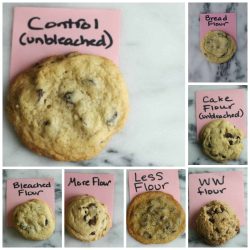
Cookie Control Recipe
Ingredients
- ½ cup (1 stick, 113 g) unsalted butter, softened
- ½ cup (99 grams) granulated sugar
- ½ cup (107 grams) light brown sugar
- 1 large 57 grams room temperature egg, lightly beaten
- 1 teaspoon vanilla
- 1 ½ cups (180 grams) unbleached all purpose flour
- ½ teaspoon baking soda
- ¼ tsp salt
- 1 cup 170 grams semi-sweet chocolate chips
Instructions
- Prepare your cookie sheets with parchment paper and pre-heat your oven to 350oF/180oC
- In a mixing bowl, whisk together the flour, baking soda, and salt. Set aside.
- In your stand mixer, cream the butter for about 1 minute to get it worked around the bowl. Then add the sugars and cream until light and fluffy about 2 minutes. Add in the room temperature beaten egg and vanilla extract.
- Stir in the dry ingredients just until incorporated. Stir in the chocolate chips by hand.
- Scoop using a 1-inch cookies scoop spaced about 2 inches apart. Bake on the middle rack, about 10-12 minutes. Remove from the oven, and allow to cool on the cookie sheet for a few minutes then transfer to the cooling rack.
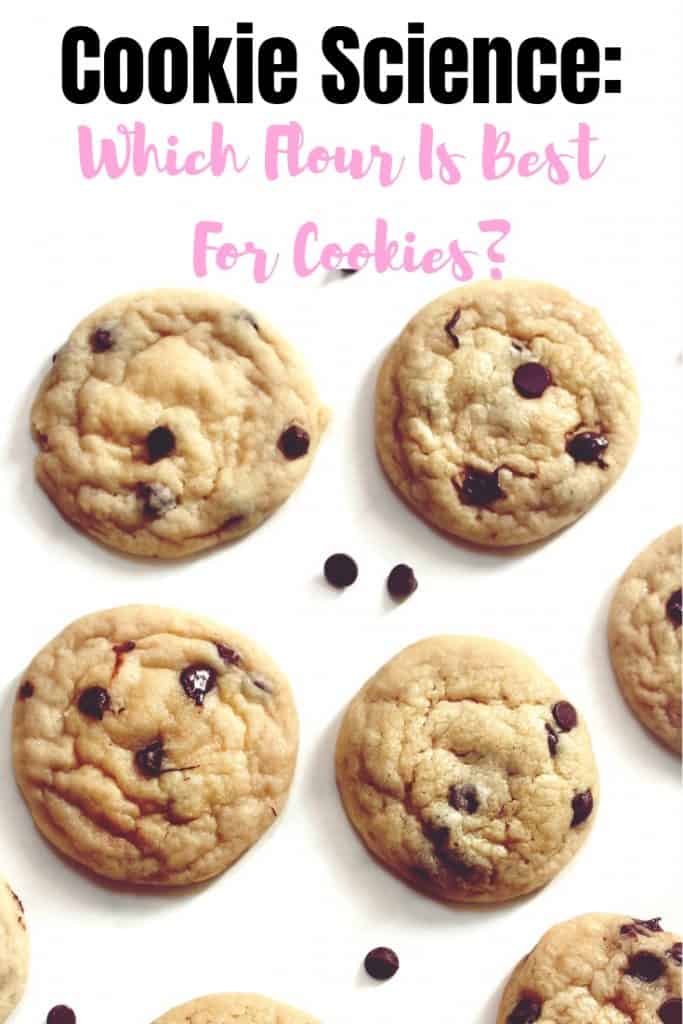
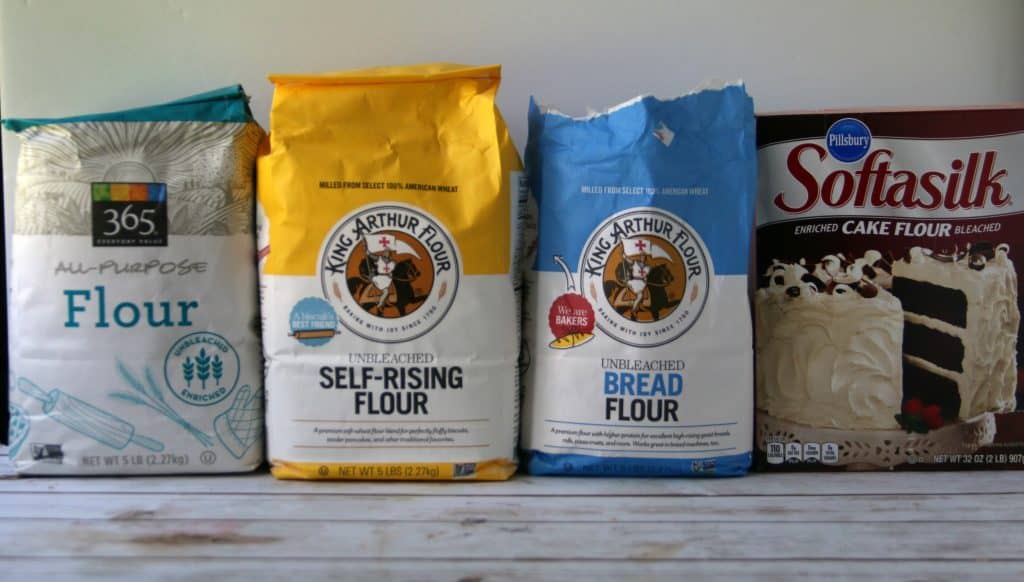
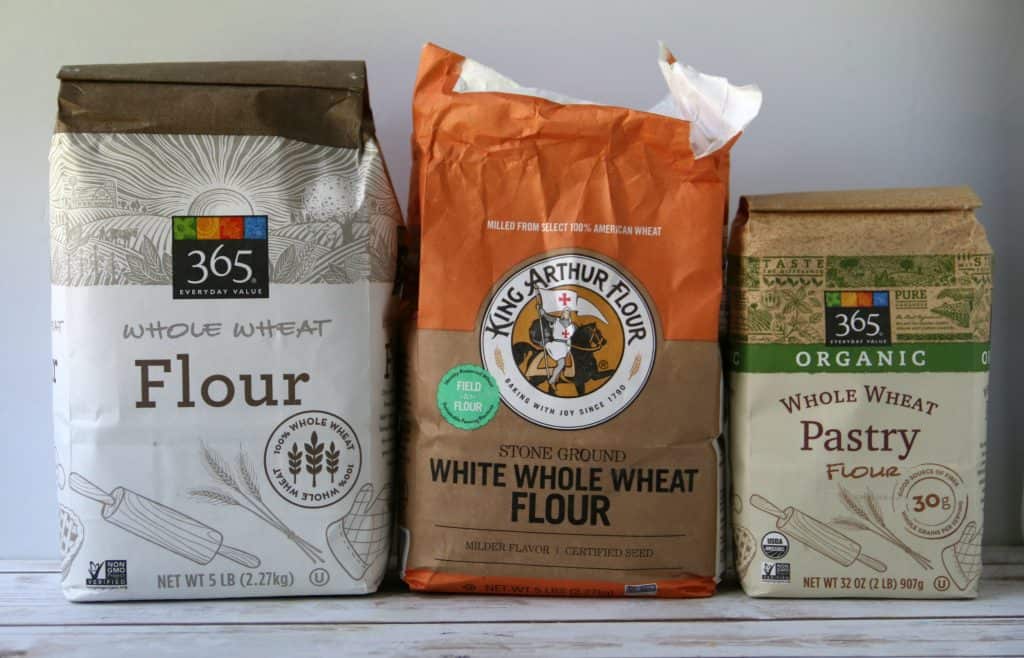
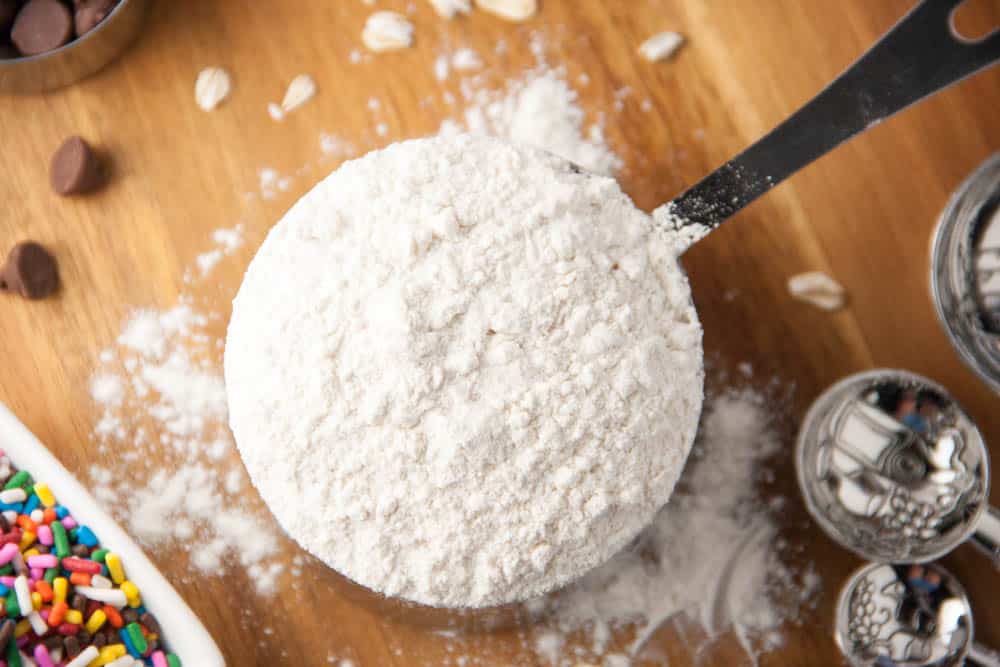

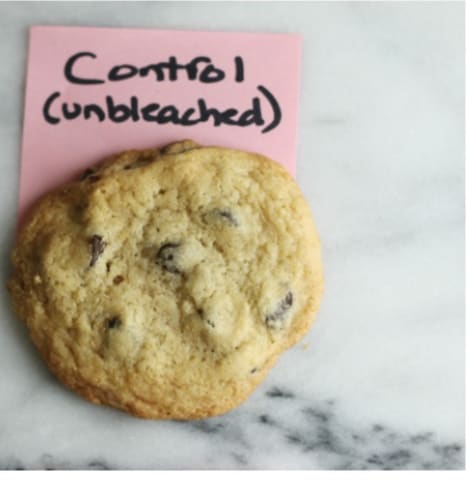
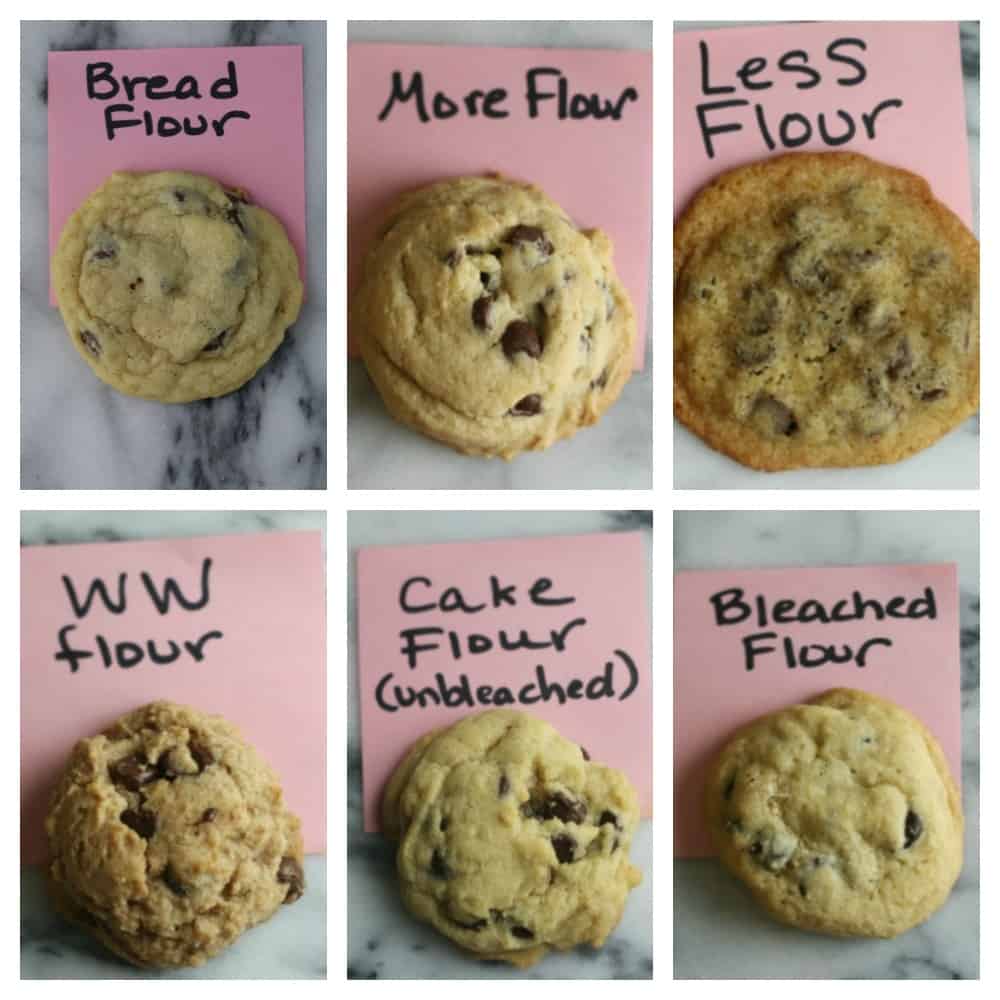
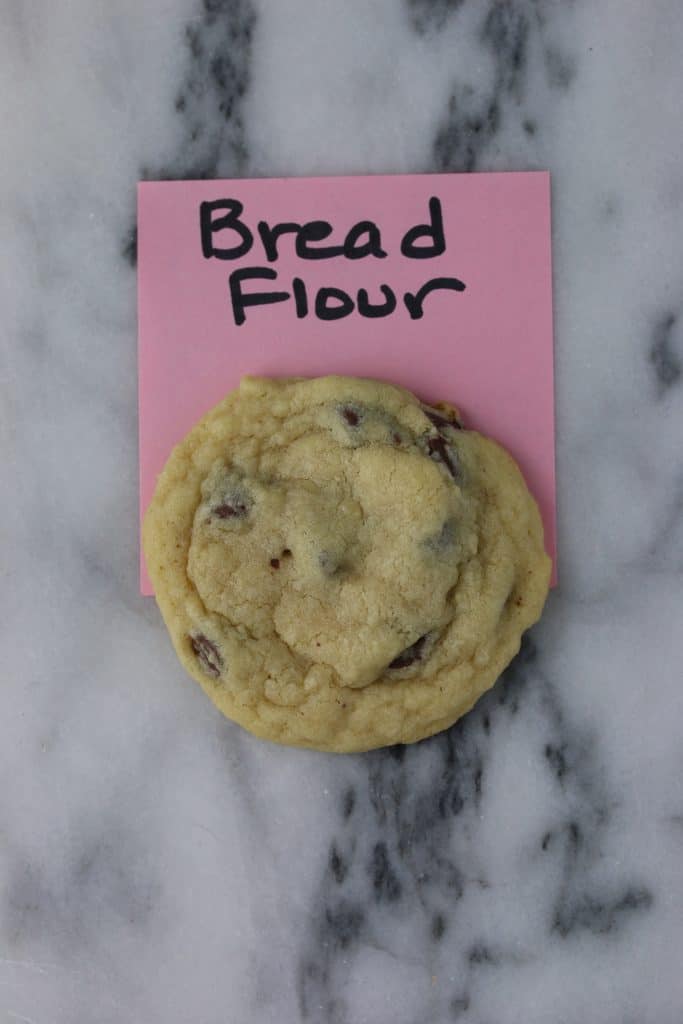
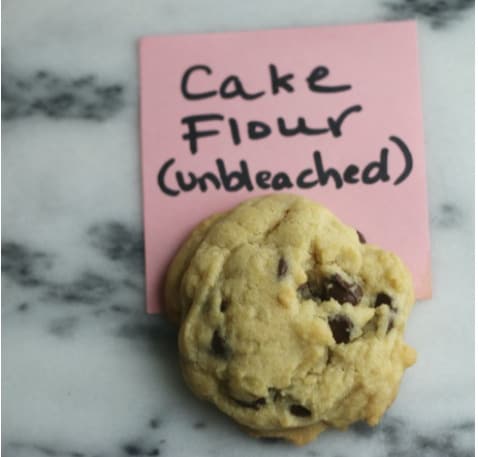
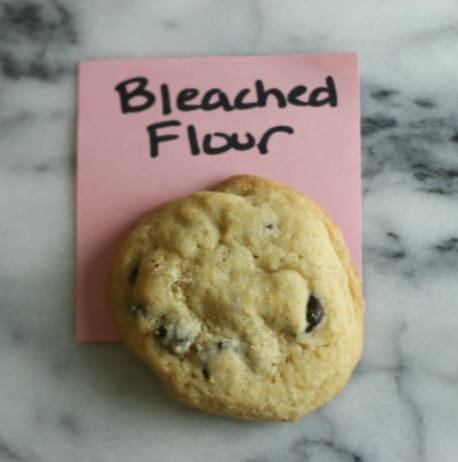
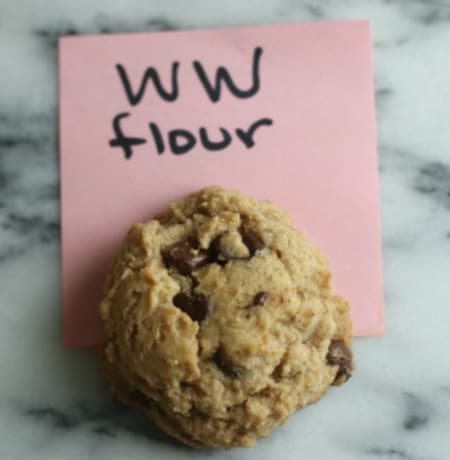
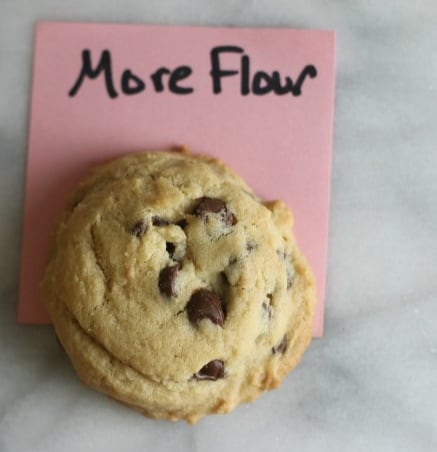
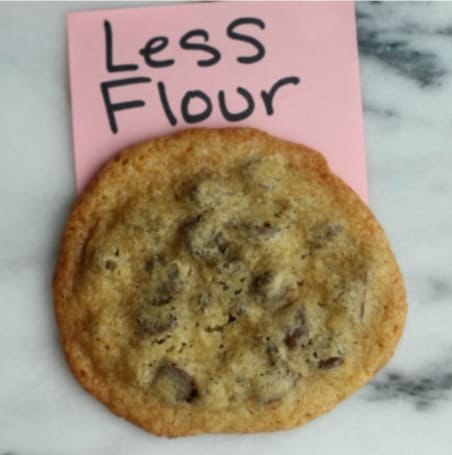

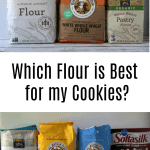

Anna says
I really appreciate the experiment here. Can you provide an additional explanation though?
I went to the store to get All-Purpose Flour and was thrown a curve ball. I am used to baking grain-free but the audience I am now serving is not keen on it and prefers the “real thing”. I wanted to purchase organic unbleached all purpose flour when I noticed the Trader Joe’s brand that is Enriched includes malted barley, while the standard is straight organic unbleached whole wheat. This left me exploring other brands of All Purpose flour at Whole Foods realizing some include malted barley and some do not. I also started reviewing their ingredient lists at their cookie bar and was still faced with contradiction, some using one version of all purpose (with malted barley) vs the other. I understand that malted barley adds amylase to convert the starch into simple sugar and aids in a browning process but I still cannot figure out which one I am supposed to use. The main purpose for the flour will be for baking cookies. Can you help me in determining which one I should be using?
Heather says
Hi Anna, I can’t say for sure how these would turn out differently I personally would just make a batch up with both to test them out. If the malted barley aids in browning my guess is you will end up with a browner (maybe even crispier cookie?). But it could vary by brand so I would test them out and see! Hope that helps!
Maritza Jordan says
Hi! So if I use bread flour with your control recipe would I use the same amount as all purpose?
Heather says
Hi Maritza, yes same amount 🙂
Taylor says
What were the measurements for the other flours that you used? Did the ingredients change? I want to do a lab in my class and the students use different flours to see what they do.
Heather says
Hi Taylor I love that you are doing this with your students! I’m a home ec teacher myself so love hearing this! I always kept the measurements the same – and used by weight 🙂 hope that helps! And no nothing else changed about the cookie except the type of flour.
Julz Meowth says
I really appreciate the details of your cookie experiment! I am about to make a bunch of cookies and banana bread, and this info helped me figure out what to use and why 🙂
Heather says
aw you’re so welcome Julz! I’m so glad you found it helpful!
Esther Krishnan says
Hi ,
Thanks for the cookie tips! I used all-purpose flour for my chocolate chip cookies, and they’re crispy without breaking into small pieces. The store-bought ones, while fragrant and crispy, break into small pieces, possibly due to a different recipe or baking technique. Thank you!
Heather says
You’re welcome Esther! Glad you found it helpful!